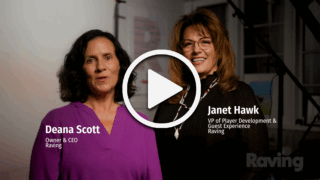
Are your non-engaged employees sabotaging your organization?
My son graduated from college this year and recently landed his first “adult” job. It was amazing to watch him enter this next stage of his life. (And yes, paying the last tuition bill did provide a greater reason to rejoice!) I observed his anticipation of his first day. He shared his excitement of seeing his first workspace and his office computer. He told me about his first meeting and his new hire training. And then I began to wonder when this “honeymoon period” would wear off. You know what I mean, right? It’s that span of time where possibilities and expectations of changing the world and making a positive impact are endless. Having hired hundreds of employees over the years, I can tell when a new hire has moved from the “honeymoon period” to the “reality
stage.” At first, everything is new, and they are eager to engage, and then it happens, not showing up as early, asking fewer questions, boredom, and complaining about the free lunch in the EDR.
According to a recent Gallup State of the Workplace Survey, only 33% of employees are engaged at work, which means 67% of our employees are checked out. According to Gallup, “Employee engagement is the outcome of actively engaging employees through a strategy that drives improvement.” The difference between an engaged employee and a non-engaged employee is huge. Engaged employees are proactive and looking for ways to improve the guest experience or innovate. A non-engaged employee is disengaged and is actively sabotaging the organization.
This issue becomes even more complex as many regions are facing record low unemployment rates making it even more difficult to hire people with experience.
The question is, does this problem lie with the employee or the culture of the organization?
I realize it is easier to blame the issue on the employee by saying things like, “We can’t get good employees in this area,” “Nobody stays because we don’t pay enough,” “The workforce today is lazy,” and so on. I believe it is this attitude that is responsible for the lack of engagement. If we instantly find a way to justify the situation it will never be completely resolved. These excuses are ways to justify the lack of performance and prevent us from truly creating a strategic plan to improve the culture of the organization. Yes, a strategic plan. Labor is our highest controllable expense, and more importantly, these are the people who are responsible for direct communication with our guests and ultimately creating our brand experience.
We need to stop looking at “them” as the problem and begin to address the core issues. Fix the disease, and the symptoms will disappear.
We work in a tough industry in smoke-filled rooms with cranky people; not to mention the unglamorous duties of housekeeping and food and beverage (and yes, I have done my share of working in these departments).
We talk about guest engagement and building brand loyalty with our guests but completely disregard the idea that resources and time must be given to create it with our employees, and it doesn’t just happen because you hire a training manager.
Why is this worth the investment?
Numerous research studies confirm that companies with high employee engagement are more profitable. Additionally, our guests continue to expect greater levels of service, and competition for entertainment dollars continues to increase. In addition to the casino “down the street,” every day a new device or
service that provides in-home entertainment is trying to grab a piece of our entertainment dollar. Services like Blue Apron bring ingredients for gourmet meals to our door; we’ve got movies on demand and internet gambling. So why come to our properties if they can get a similar product at home?
Our properties and the experience created are the reasons people will leave their home. Therefore, we must ensure that the experience we provide creates a positive memory to encourage a reason to return. We know all of this at some level, but creating an experience that outshines the competition takes planning, resources, and commitment. And this all ties into employee engagement.
You can’t just check the box.
There is a science to creating employee engagement, and it is up to the leaders in the organization to create an environment where that can happen. Each organization is different, so it is important to create a program specific to your organization. Here are three basic steps to get you started:
Create it – If you want to do it right, you must start with a 360 review of the organization and then use that information during an engagement design workshop with the leadership team to create the plan.
Implement it – This is where the real hands-on work begins. Consistent ongoing implementation is critical to instilling the practices into the fabric of the property. Be sure that ownership for implementation is spread throughout all levels of the organization.
Measure it – Implement employee surveys and from that data create performance indicators. This will give you a baseline to measure improvement in performance and engagement. The expectations must also be incorporated in performance reviews. Remember, this is about creating value for the organization in the long run.
What about your casino’s philosophy on employee engagement? Are you leading the way? As a follow up to this article, I’ll be sharing programs that are being done throughout our industry. Email me at [email protected] and tell me about your employee engagement program and how you measure its success.
Our employees deserve the investment in time and money to improve the engagement of our teams, which will ultimately result in greater profits.
As for my son, it appears he is still in the honeymoon stage, and I am very proud of him. This is great for him, his employer and me, and not only because of the end of tuition.
This article was originally published in the October 2017 Issue of Casino Journal.







